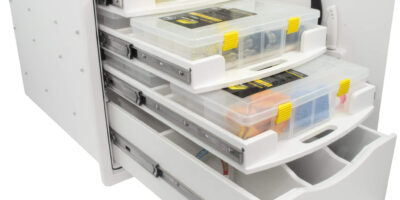How to Choose the Best Fishing Reel
Choosing the best fishing reel can be overwhelming. With so many options, it’s essential to know what to look for. Understanding different reel types, materials, and features will help you make an informed decision. This guide covers everything you need to be aware of before buying a fishing reel.
Types of Fishing Reels
Fishing reels come in several types, each suited for different purposes. The most common ones are spinning reels, baitcasting reels, and spin-casting reels. Your choice highly depends on your fishing style and the species you plan to catch.
Spinning Reels
Spinning reels are popular among anglers of all skill levels. They are versatile and easy to use. This type of reel is ideal for light to medium fishing scenarios. You can use spinning reels for freshwater and some saltwater fishing. In terms of compatibility, spinning reels work well with lighter lures and lines.
Baitcasting Reels
Baitcasting reels are preferred by experienced anglers. They offer better control and precision. Baitcasting reels perform well with heavier lines and larger lures. They are suitable for targeting larger fish species. Despite their advantages, they have a steeper learning curve. Practice is required to prevent line tangles and backlashes.
Spin-Casting Reels
Spin-casting reels are user-friendly. They are perfect for beginners or casual fishers. These reels have a closed-face design that prevents line tangles. However, spin-casting reels are not suitable for heavy lines or large fish. They are best used for light fishing activities.
Material and Construction
Reel materials directly affect durability and performance. Common materials include graphite, aluminum, and stainless steel.
Graphite
Graphite reels are lightweight. They provide good resistance to corrosion. These reels are suitable for saltwater fishing due to their non-corrosive qualities. Despite being lighter, they may not be as strong as aluminum reels.
Aluminum
Aluminum reels are known for their strength. They are more durable and can handle significant wear and tear. These reels are heavier but offer better performance. Aluminum reels are ideal for heavy-duty freshwater and saltwater fishing.
Stainless Steel
Stainless steel components are often used for gears and shafts in reels. They provide extra strength and corrosion resistance. Reels with stainless steel parts tend to offer smoother operation and longer lifespan.
Gear Ratios
The gear ratio determines the speed and power of the reel. It is expressed in numbers like 6.4:1. This means the spool rotates 6.4 times with one turn of the handle.
- High gear ratios (6.0:1 and higher) are best for fast retrieves.
- Medium gear ratios (between 5.0:1 and 6.0:1) offer a balance of speed and power.
- Low gear ratios (below 5.0:1) provide more torque for reeling in larger fish.
Drag System
The drag system helps you control the resistance on the line while reeling in a fish. A good drag system is smooth and consistent. It allows you to adjust the resistance to match the size and strength of the fish.
- Front drag systems offer precise adjustments and are often found on spinning reels.
- Rear drag systems are easier to adjust during a fight but may not offer the same level of precision.
Ball Bearings
Ball bearings in a reel affect its smoothness and performance. More bearings generally mean smoother operation. Look for reels with high-quality, sealed bearings to ensure longevity and reliability.
Line Capacity
Line capacity indicates how much fishing line the reel can hold. It’s an essential factor depending on the fish species you target and the fishing environment. Larger fish and deep-water fishing require reels with higher line capacities.
Handle and Grip
A comfortable handle and grip are crucial for extended fishing sessions. Handles come in various designs and materials. Some handles offer an ergonomic design for better comfort and control. Ensure the handle fits your hand well and provides a good grip.
Weight and Balance
Reel weight should complement your rod for better balance and handling. A balanced setup reduces fatigue and improves casting accuracy. Lightweight reels are easier to handle but may lack strength. Heavier reels offer more power but can be tiring to use over long periods.
Anti-Reverse Mechanism
An anti-reverse mechanism prevents the handle from turning backward. This feature provides better hook sets and overall control. Check for reliable anti-reverse features in the reel you choose.
Price and Brand
Reels come in different price ranges. Expensive reels usually offer better materials and features. However, many mid-range options provide excellent performance. Stick to reputable brands known for quality and customer support.
Fishing Environment
Your fishing environment influences the type of reel you need. Saltwater fishing demands corrosion-resistant materials. Freshwater fishing reels may not need the same level of protection. Always consider the conditions you’ll be fishing in before making a choice.
Power and Technique
Different fishing techniques require various reel characteristics. For instance, fly fishing reels are specifically designed for that technique. Matching your reel to your intended fishing method ensures better performance and results.
Understanding your requirements and preferences will help you select the best fishing reel. Take the time to research and consider all factors. Making an informed choice will enhance your fishing experience and success.
“`
